COOMETE may be one of Victoria’s longest continually held family farms. But don’t for a second think it’s bogged down under a weight of tradition
By James Wagstaff, The Weekly Times July 1, 2015
Here, in the rolling hills near Hexham in the Western District, beef cattle and sheep are born to perform while the latest technology has been adapted to allow for an expansion into a rewarding-yet-risky third income stream: cropping.
Coomete was selected in 1860 and has never been sold. While Melbourne-born Jack Roxburgh is a fifth generation of his family to own the farm, he’s the first to live on it and manage it full time.
After decades of employing managers, Jack and wife Jenny have set about transforming the operation and positioning it well for a sixth generation. They have three children: Henrietta, 14, Anna, 13, and Johnno, 10.
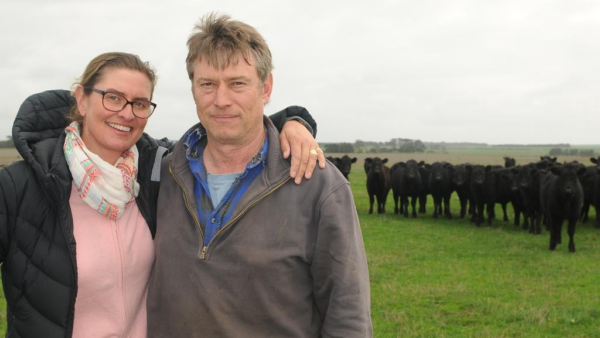
COOMETE PTY LTD
LAND AHOY
COOMETE itself is 1600ha, with an additional 400ha half an hour’s drive southwest. The operation is fairly evenly split between beef cattle, sheep and crops.
Coomete receives about 600mm of rain a year and 750mm at the southern block. Most of the rain falls in winter.
Recent seasons have “not been great”. Last year’s spring failed, leading to a lack of standing feed over summer and forcing the Roxburghs to containment feed all their livestock for about five months.
Pastures are mostly perennial ryegrass and subclovers on the grey, brown loam country, and fescue and phalaris on the alluvial black soil. The Roxburghs aim to sow 100ha of permanent pastures and 250ha of annual pastures annually.
They are trialling using composts on their pastures for “a more balanced nutrient approach”.
CATTLE CALL
COOMETE was one of the first properties in the Western District to run Angus cattle, and has been a member of Angus Australia for 75 years. It ran about 400 registered cows until the 1990s when Jack switched to a more commercial focus.
One of the original members of the Team Te Mania program, Coomete now runs 500 spring-calving Angus breeding cows, with steers turned off to feedlots at entry weights of 400-500kg.
Jack said he used Te Mania — which is responsible for Coomete’s bull selection, with an emphasis on growth and marbling traits as well as low birthweight for heifers — for its superior genetics and service. Under the Team Te Mania program, bulls are leased for three years. The Roxburghs run 15 bulls, turning over five a year.
Bulls are joined for six weeks from November 1 at a rate of one to every 50-60 females. Jack acknowledged “the six-week joining puts a bit of pressure on their fertility” with any female that doesn’t get in calf culled. The Roxburghs switched from an autumn calving about 15 years ago in a move designed “really to meet the grass production”.
MILKY WAY
JACK said the cows milked well during summer. Depending on season and the condition of their mothers, calves are yard weaned at about 220kg in February-March.
“We really look at cow condition score. As a whole if they drop below 2.5-3 (score), we might do it earlier,” he said.
At weaning, calves are fed cereal hay and handled — receiving a five-in-one vaccine, a mineral supplement and a drench as well as being let out of the yards a few times — over a week. Steers are sold exclusively to Rangers Valley feedlot at Glen Innes in northern NSW, which chases marbling for the lucrative Japanese market.
Jack said of 250 heifers produced each year, more than 200 were joined. About 100 are retained for the breeding herd with the remainder sold in calf. Cows are run up to eight years.
EWE TURN
JACK describes sheep as “a necessary evil”, but acknowledges they had “a comparative advantage in this country”.
The Roxburghs previously bred the wool-focused Comeback breed, but found foot problems were “beating us, and we wanted to have a more easy-care sheep”. They now run 6000 composite crossbred ewes, comprising 50 per cent Coopworth and infusions of East Friesian and Finn. Rams are purchased from the Cashmore Park stud at Cashmore with an emphasis on performance.
Ewes and rams are joined from late March, at a rate of one per 100, plus an additional one per mob, for lambing in August. Ewes are run in mobs of about 1000 and rotationally grazed around a minimum 1400kg of dry matter/ha. The size of mobs is reduced at lambing but increased again after marking. Lambs are mostly sold over-the-hooks at five to 12 months weighing 18-26kg.
GRAIN WAVE
WHEN Jack returned to Coomete in 1990, it was mostly “station country”. “Most of it had never seen the plough and had what we call humps and hollows … you’d have topsoil but then the holes would be nearly down to the clay,” he said.
Having levelled the country, the Roxburghs decided that they “may as well put a crop in while we’re at it”. Jack said cropping was addictive when the season worked in its favour. “If you’ve got a five tonne (per hectare) wheat crop, even at $200 a tonne, that’s $1000 a hectare. It was really hard to make $1000 a hectare out of wool or beef.”
Acknowledging the risks associated with cropping, Jack said after a wet year, when the crops went underwater “and we didn’t make a cent”, they had switched to raised beds.
This year’s program included 350ha of wheat, 200ha of beans as well as a “few hundred hectares” of annual grasses, which has replaced canola.
Crops are sown on the autumn break in April and May. Canola is normally windrowed in mid-December ahead of harvest, which extends into January for wheat. Last year, wheat averaged 5.5 tonnes/ha, canola two tonnes/ha and beans three tonnes/ha.
FUTURE GAZING
LIKE many farming families, the Roxburghs say their biggest expense is bank interest, due to a family settlement, recent land purchases and failed cropping seasons, followed by labour and fertiliser.
Jenny acknowledges while they could sell land to ease the pressure, “when you inherit something like this, you really don’t want to take the easy road”.
“You want it to be a little bit bigger and in a little bit better condition when you leave than when you got it,” she said. “Because you are only a caretaker for a generation … you’re never really an owner.”
RawAg podcast with Jack and Jen Roxburgh – Episode 10
- Member of Team Te Mania since 1999
- Johne’s status – Beef Only
- Calving period – Aug-Sept

